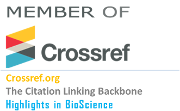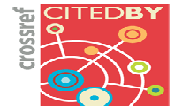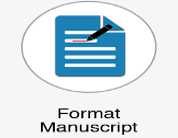Shrimp waste utilization: Exploring composition, bioactive potential, and safety treatments
Abstract
The global focus on waste management and recycling is increasing, driven by the need to protect the environment from the harmful effects of waste accumulation. This study evaluated the chemical composition, bioactive potential, and microbial quality of shrimp waste, revealing significant variations across treatments and locations. Ghalyoun shrimp heads exhibited the highest protein (41.6%) and fat (16.9%) contents, while shells and tails from Port Said and head from Ghalyoun shrimp were rich in calcium (76.55 mg/g, 75.9 mg/g), respectively. Phenolic content was highest in Jumbo Suez heads (77.06 mg GAE/g DM), exhibiting maximum antioxidant activity of 65.8% (DPPH assay) in the same sample. Furthermore, HPLC analysis showed pyrogallol dominance in Ghalyoun shells (32,974 ppm) and Ismalawy heads (32,907 ppm), while Jumbo Suez heads had the highest gallic acid (4,508 ppm) and catechol (8,514 ppm). Ellagic acid peaked in Jumbo Suez (10,643 ppm), confirming strong bioactive potential. Heavy metals, including Pb and Ni, were highest in heads (1.3 mg/g and 1.34 mg/g, respectively), but effective chelation treatments, particularly T6 (acetic acid 12.5% + citric acid 5% + Sodium chloride 5%), significantly reduced these levels and microbial contamination, lowering total microbial counts to 3.57 log CFU/g. The findings suggest shrimp waste, particularly heads, as a valuable resource for antioxidants, proteins, and minerals, with appropriate treatments ensuring safety for industrial applications.
Keywords
Full Text:
View Full TextReferences
Maia ML, Grosso C, Barroso MF, Silva A, Delerue-Matos C, Domingues VF. Bioactive compounds of shrimp shell waste from Palaemon serratus and Palaemon varians from Portuguese coast. Antioxidants. 2023;12(2):435.
Dayal JS, Ponniah A, Khan HI, Babu EM, Ambasankar K, Vasagam KK. Shrimps–a nutritional perspective. Current science. 2013:1487-91.
Rossi N, Grosso C, Delerue-Matos C. Shrimp waste upcycling: unveiling the potential of polysaccharides, proteins, carotenoids, and fatty acids with emphasis on extraction techniques and bioactive properties. Marine Drugs. 2024;22(4):153.
IMARC. Shrimp Market: Global Industry Trends, Share, Size, Growth, Opportunity and Forecast 2020–2025. Sydney: International Mining and Resources Conference; 2025.
Nirmal NP, Santivarangkna C, Rajput MS, Benjakul S. Trends in shrimp processing waste utilization: An industrial prospective. Trends in Food Science & Technology. 2020;103:20-35.
FAO. Food supply—Livestock and fish primary equivalent; 2021. FAOSTAT. http://www.fao.org/faostat/en/#data/CL.
Abidin Z. Total carotenoids, antioxidant and anticancer effect of Penaeus monodon shells extract. Biointerface Research in Applied Chemistry. 2021;11(4):11293-302.
Muniyappan J, Varadharajan V, Namadevan P. Biochemical screening and determination of bioactive components of commercially cultured pacific white shrimp Penaeus vannamei. Pharmacognosy Research. 2019;11(2).
Rossi N, Grosso C, Delerue-Matos C. Shrimp waste upcycling: unveiling the potential of polysaccharides, proteins, carotenoids, and fatty acids with emphasis on extraction techniques and bioactive properties. Marine Drugs. 2024;22(4):153.
Suprapti NH, Syarani L, Anggoro S. The chromium (Cr) content in water and in the tissue of mud crab Scylla serrata (Forskal.) in the brackishwater ponds around Babon River Estuary of Semarang coastal areas in Central Java, Indonesia. Journal of Coastal Development. 2012;16(1):62-7.
Ray S, Mondal P, Paul AK, Iqbal S, Atique U, Islam MS, et al. Role of shrimp farming in socio-economic elevation and professional satisfaction in coastal communities of Southern Bangladesh. Aquaculture Reports. 2021;20(100708):1-10.
Latimer Jr GW. Official Methods of Analysis. 1920.
Liu D, Shi J, Ibarra AC, Kakuda Y, Xue SJ. The scavenging capacity and synergistic effects of lycopene, vitamin E, vitamin C, and β-carotene mixtures on the DPPH free radical. LWT-Food Science and Technology. 2008;41(7):1344-9.
Wong-Paz JE, Contreras-Esquivel JC, Rodríguez-Herrera R, Carrillo Inungaray ML, López LI, Nevárez-Moorillón GV, et al. Total phenolic content, in vitro antioxidant activity and chemical composition of plant extracts from semiarid Mexican region. Asian Pacific Journal of Tropical Medicine. 2015;8(2):104-11.
Dibacto REK, Tchuente BRT, Nguedjo MW, Tientcheu YMT, Nyobe EC, Edoun FLE, et al. Total polyphenol and flavonoid content and antioxidant capacity of some varieties of Persea americana peels consumed in Cameroon. The Scientific World Journal. 2021;2021(1):8882594.
Goupy P, Hugues M, Boivin P, Amiot MJ. Antioxidant composition and activity of barley (Hordeum vulgare) and malt extracts and of isolated phenolic compounds. Journal of the Science of Food and Agriculture. 1999;79(12):1625-34.
Hassan A, Mahmoud AWM, Turky G. Rice husk derived nano zeolite (AM 2) as fertilizer, hydrophilic and novel organophilic material. American Journal of Nanomaterials. 2017;5(1):11-23.
Greenwood M. Practical Food Microbiology. Blackwell Pub.; 2003.
Liu Z, Liu Q, Zhang D, Wei S, Sun Q, Xia Q, et al. Comparison of the proximate composition and nutritional profile of byproducts and edible parts of five species of shrimp. Foods. 2021;10(11):2603.
Fanimo A, Mudama E, Umukoro T, Oduguwa O. Substitution of shrimp waste meal for fish meal in broiler chicken rations. 1996.
Okoye F, Ojewola G, Njoku-Onu K. Evaluation of shrimp waste meal as a probable animal protein source for broiler chicken. International Journal of Poultry Science. 2005;4(5):458-61.
Mahata M. Repairing shrimp waste nutrient quality as poultry feed through chitinases and chitinase hydrolysis from Serratia marcescens bacterium. Dissertation Univ Andalas Padang. 2007.
Mizani AM, Aminlari BM. A new process for deproteinization of chitin from shrimp head waste. In: Proceedings of European Congress of Chemical Engineering (ECCE-6). September Copenhagen; 2007. p. 16-20.
Sachindra NM, Bhaskar N. In vitro antioxidant activity of liquor from fermented shrimp biowaste. Bioresource Technology. 2008;99(18):9013- 6.
Prameela K, Murali M, Hemalatha K. Extraction of pharmaceutically important chitin and carotenoids from shrimp biowaste by microbial fermentation method. Journal of Pharmaceutical Research. 2010;3(10):2393 5.
Omar S, Farag M, Taha R, GabAlla A, Rayan A. Utilization of shrimp waste powder as a functional ingredient in fortifying ready-to-eat foods. Journal of Chemistry and Nutritional Biochemistry. 2025;6(1):47-67.
Jeyasanta I, Allwin SJ, Patterson J. Development of nutritious better utilization to reduce. Development. 2017;5(3):1-8.
Beaney P, Lizardi-Mendoza J, Healy M. Comparison of chitins produced by chemical and bioprocessing methods. Journal of Chemical Technology & Biotechnology: International Research in Process, Environmental & Clean Technology. 2005;80(2):145-50.
Singh S, Siddhnath BR, Aziz A, Verma N, Chriwatkar B. Shrimp waste powder–Potential as protein supplement. International Journal of Pure and Applied Bioscience. 2018;6(6):401-6.
Prato E, Biandolino F, Parlapiano I, Giandomenico S, Denti G, Calò M, et al. Proximate, fatty acids and metals in edible marine bivalves from Italian market: Beneficial and risk for consumers health. Science of the Total Environment. 2019;648:153-63.
on Food Additives Meeting JFEC. Evaluation of Certain Food Additives and Contaminants: Eightieth Report of the Joint FAO/WHO Expert Committee on Food Additives. vol. 80. World Health Organization; 2016.
Azelee IW, Ismail R, Ali R, Bakar W. Chelation technique for the removal of heavy metals (As, Pb, Cd and Ni) from green mussel, Perna viridis. NISCAIR-CSIR Bulletin. 2014.
Shiekh HM, Gumgumjee NM, Danial EN. Antifungal and antioxidant activities of methanol extract of chitin, chitosan and shrimp shell waste. International Journal of Pharmaceutical and Phytopharmacological Research. 2018;8(2):25-30.
Shahidi F, Ambigaipalan P. Phenolics and polyphenolics in foods, beverages and spices: Antioxidant activity and health effects–A review. Journal of Functional Foods. 2015;18:820-97.
Nunes R, Pasko P, Tyszka-Czochara M, Szewczyk A, Szlosarczyk M, Carvalho IS. Antibacterial, antioxidant and anti-proliferative properties and zinc content of five South Portugal herbs. Pharmaceutical Biology. 2017;55(1):114-23.
Bersuder P, Hole M, Smith G. Antioxidants from a heated histidine-glucose model system. I: Investigation of the antioxidant role of histidine and isolation of antioxidants by high-performance liquid chromatography. Journal of the American Oil Chemists’ Society. 1998;75(2):181-7.
Binsan W, Benjakul S, Visessanguan W, Roytrakul S, Tanaka M, Kishimura H. Antioxidative activity of Mungoong, an extract paste, from the cephalothorax of white shrimp (Litopenaeus vannamei). Food Chemistry. 2008;106(1):185-93.
Manni L, Ghorbel-Bellaaj O, Jellouli K, Younes I, Nasri M. Extraction and characterization of chitin, chitosan, and protein hydrolysates prepared from shrimp waste by treatment with crude protease from Bacillus cereus SV1. Applied Biochemistry and Biotechnology. 2010;162:345-57.
Wang SL, Li JY, Liang TW, Hsieh JL, Tseng WN. Conversion of shrimp shell by using Serratia sp. TKU017 fermentation for the production of enzymes and antioxidants. Journal of Microbiology and Biotechnology. 2010;20(1):117-26.
Suvanich V, Marshall D, Jahncke M. Microbiological and color quality changes of channel catfish frame mince during chilled and frozen storage. Journal of Food Science. 2000;65(1):151-4.
Amir RM, Randhawa MA, Sajid MW, Nadeem M, Ahmad A, Wattoo FM. Evaluation of various soaking agents as a novel tool for heavy metal residues mitigation from spinach. Food Science and Technology. 2018;39:176-80.
Labanowski J, Monna F, Bermond A, Cambier P, Fernandez C, Lamy I, et al. Kinetic extractions to assess mobilization of Zn, Pb, Cu, and Cd in a metal-contaminated soil: EDTA vs. citrate. Environmental Pollution. 2008;152(3):693-701.
DOI: https://doi.org/10.36462/H.BioSci.202502
Refbacks
- There are currently no refbacks.
Copyright (c) 2025 Omar et al..

This work is licensed under a Creative Commons Attribution 4.0 International License.
...........................................................................................................................................................
Other "Highlights in" Journals
Highlights in Bioinformatics, Highlights in Chemistry, Highlights in Science, Highlights in Microbiology, Highlights in Plant Science
........................................................................................................................................
International Library of Science "HighlightsIn" is an Open Access Scientific Publishers, aiming to science and knowledge support













